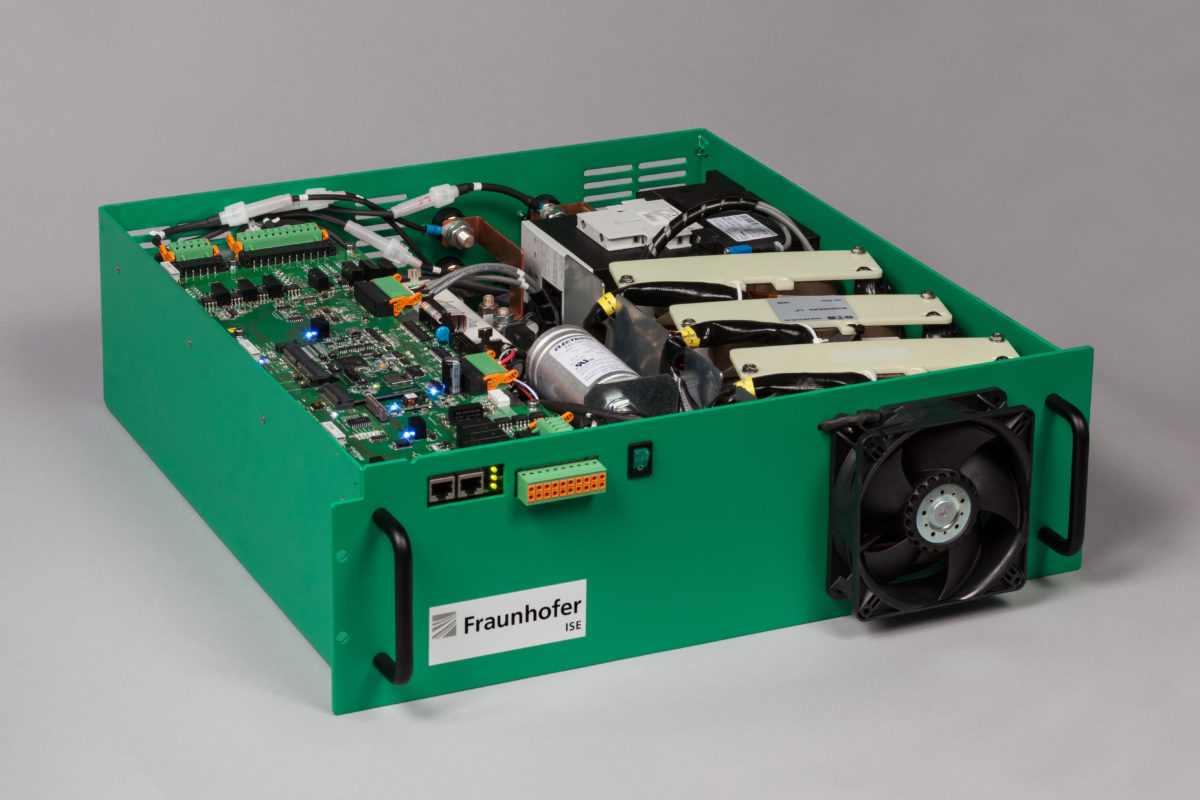pv magazine has evaluated and assessed a range of energy storage innovations and applications for the upcoming Energy Storage Europe in Düsseldorf (March 13-15).
Our highlights ranking awards the top 10, based on the scores of an expert, independent jury, which assessed a total of 24 candidates. The full ranking is published in the pv magazine energy+storage special issue, created in cooperation with Messe Düsseldorf.
After publishing, last week, a preview on the fifth technology in the ranking – Electrochaea’s scalable methanathan plant – over the next few weeks we will publish in descending order the Top 4 products and innovations that were awarded for their excellence. This time we approach…
#4: Fraunhofer ISE’s Cell-Booster and the power electronics for the project “Netefficient”
According to Fraunhofer ISE, the Cell-Booster and the power electronics for the project “Netefficient” permit high efficiencies on the one hand, and small construction volumes on the other. The cell booster converts the typical 48-volt output of a low-voltage battery with an efficiency of 97 percent to 700 volts, as required for example by a three-phase battery inverter. According to Stephan Liese, Head of Group Distributed Generation and Storage, the key factor enabling this high efficiency is the high frequency, which is even modulated, with which the transformer is operated. According to Liese, efficiency levels of between 90 and 95 percent are customary in the market for comparable applications. In addition to the increased efficiency, the high frequency also helps to reduce the size of the housing.
The jury found the submission very interesting from a technological point of view. Currently, inverters in stationary applications cause around twice as much loss as the lithium-ion batteries themselves”, writes one juror. Therefore, efficiencies are of such high relevance.”. He also sees Fraunhofer ISE’s ability to bring the technology to market together with industrial partners. Two jurors are missing that they have not found a concept for the market launch. One of the jurors asked whether the large number of components would lead to higher costs.
For the Netefficient project, which aims to increase the share of renewable energies on the North Sea island of Borkum, the institute has built a 1 MW battery inverter. This is characterized by the use of silicon carbide MOSFET switches, which leads to high efficiencies of up to 98.5%
and at the same time allows the volume to be kept small. The electronics for 1 MW output power fit into a standard 19 inch switch cabinet.
Stephan Liese says that several manufacturers are already using the cell booster technology. Basically, the advantages of silicon carbide technology have been known for a long time and there are also inverters in which it is used. Manufacturers still hesitate, however, because the cost of these semiconductors is still relatively high. This could change as a result of the volume market which is emerging in the course of the progress with electromobility, says Liese.
Fraunhofer ISE's booth at Energy Storage Europe can be found at Hall 8b/B39.
Find out #3… in the ranking on Friday, March 2.
The Energy Storage Highlights Jury comprises:
- Logan Goldie Scot, who heads up the Energy Storage insight team at Bloomberg New Energy Finance.
- Tobias Federico, Founder and Managing Director of consulting institute Energy Brainpool.
- Dirk Uwe Sauer, Professor of Electrochemical Energy Conversion and Storage Systems Engineering at RWTH Aachen University.
- Julian Jansen, a Senior Market Analyst at IHS Markit Technology.
- Stephan Schnez, Senior Scientist in Corporate Research at ABB in Switzerland.
Read more about the Energy Storage Highlights ranking, criteria and the selection process in the pv magazine energy+storage special.
This content is protected by copyright and may not be reused. If you want to cooperate with us and would like to reuse some of our content, please contact: editors@pv-magazine.com.



By submitting this form you agree to pv magazine using your data for the purposes of publishing your comment.
Your personal data will only be disclosed or otherwise transmitted to third parties for the purposes of spam filtering or if this is necessary for technical maintenance of the website. Any other transfer to third parties will not take place unless this is justified on the basis of applicable data protection regulations or if pv magazine is legally obliged to do so.
You may revoke this consent at any time with effect for the future, in which case your personal data will be deleted immediately. Otherwise, your data will be deleted if pv magazine has processed your request or the purpose of data storage is fulfilled.
Further information on data privacy can be found in our Data Protection Policy.